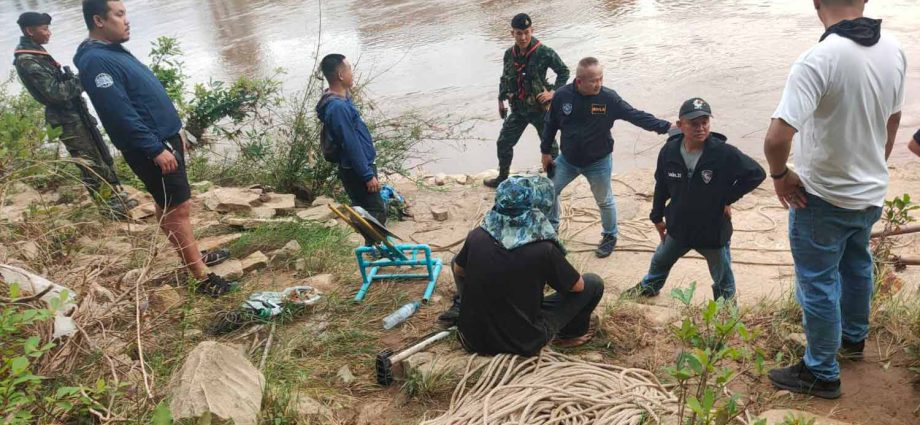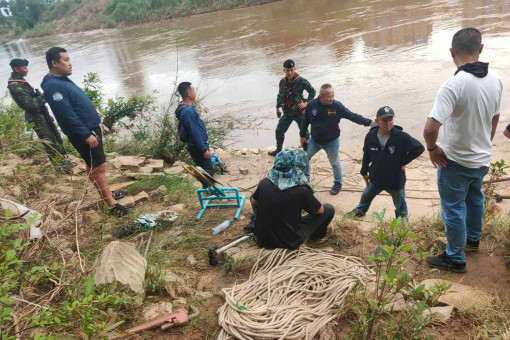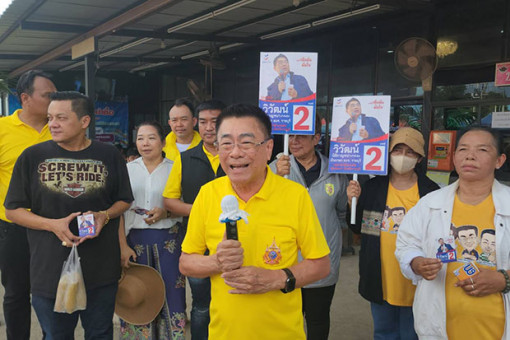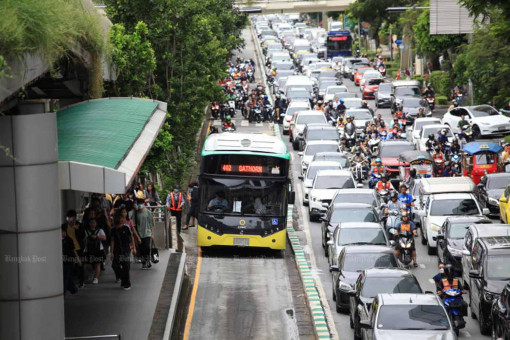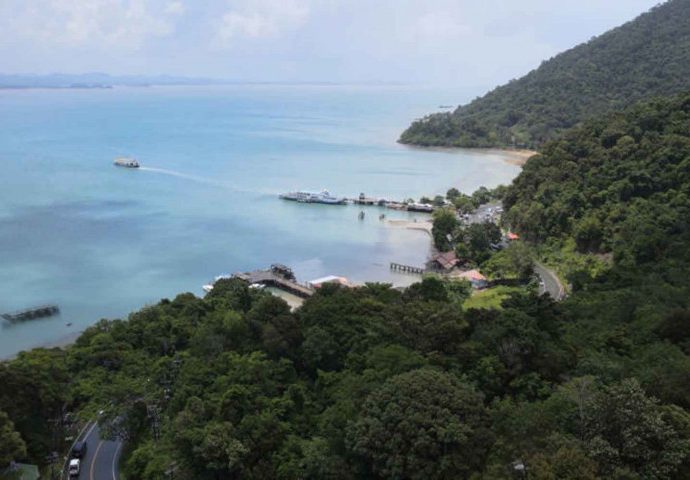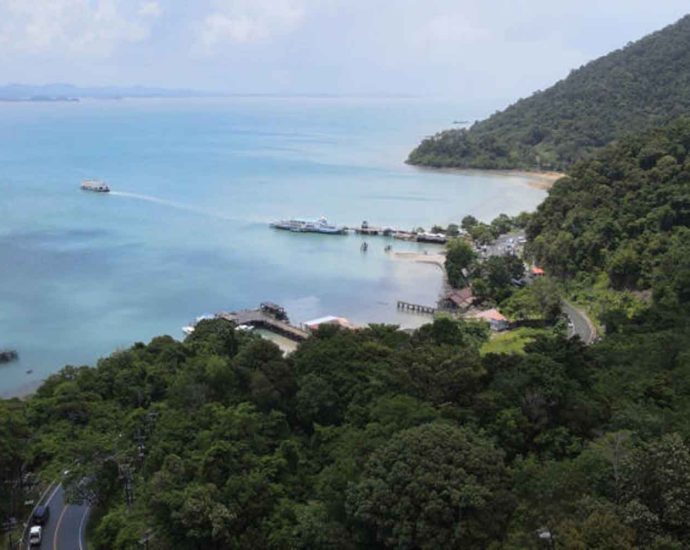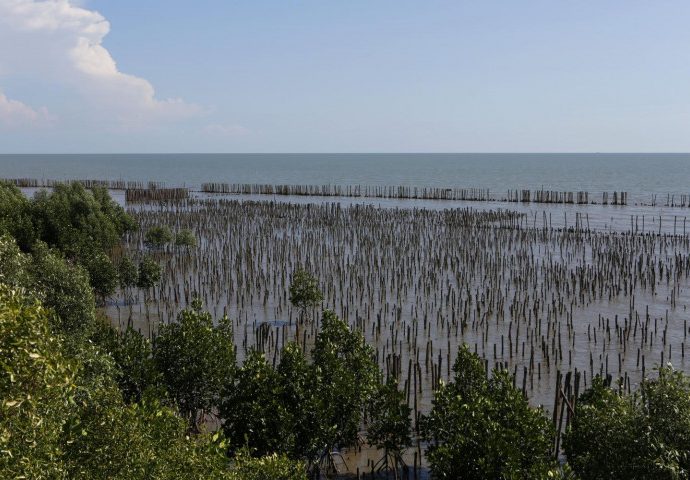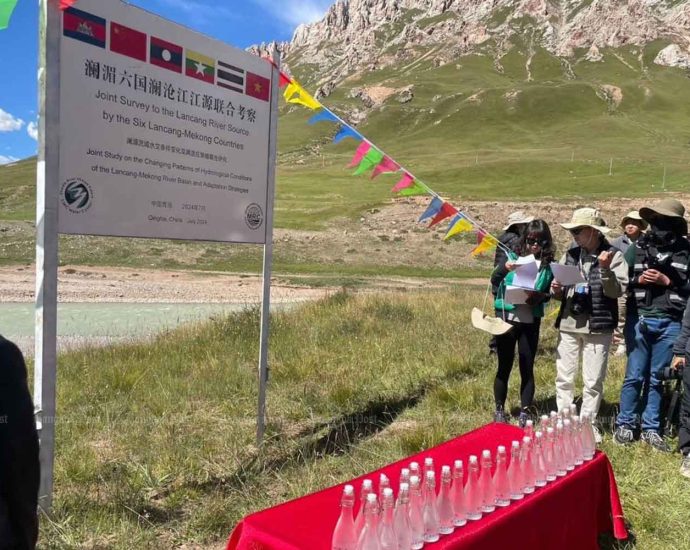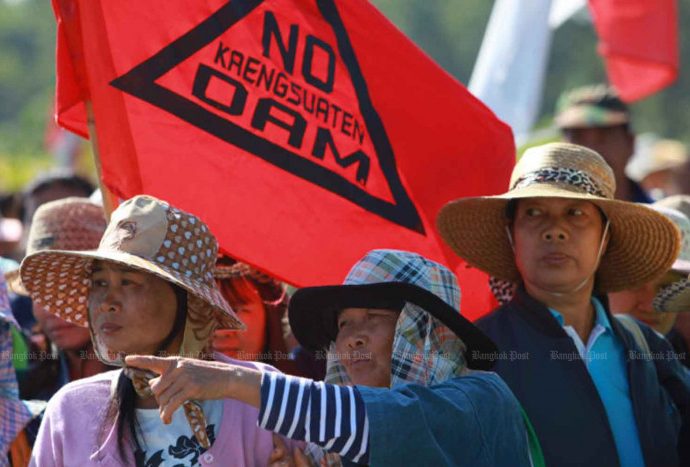Man caught stringing cables across river to Myanmar
Water rocket intended to carry wires over Moei river

TAK – A man was has been arrested beside the Moei river in Mae Sot district while allegedly stringing power and communications cables illegally across the river to Myanmar.
Equipment seized from him included a water rocket believed intended to carry the lines over the water.
Soldiers and police detained 30-year-old Jongrak Leela, from the northeastern province of Roi Et, beside the border river in Ban Mae Kid Mai village of tambon Mae Kasa on Sunday evening.
Officials said the suspect was arrested with 16 iron pipes, big rolls of wire and optical fibre cables, a water rocket, an air pump, pulleys, ropes and wrenches.
Officials believed the man intended using the water rocket to carry the wiring and optical fibre cables across the Moei River, to supply power and internet services to users on the opposite side.
The suspect was taken to Mae Sot police station for questioning and prosecution.



